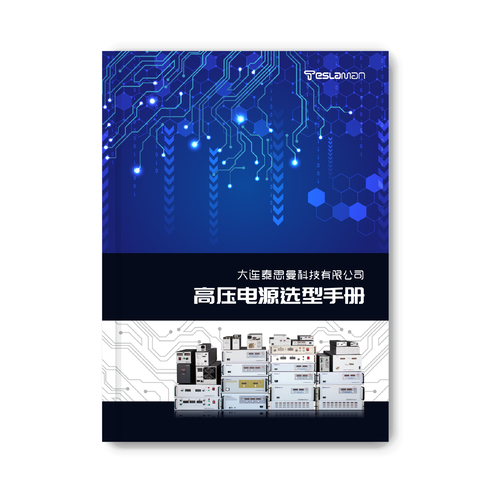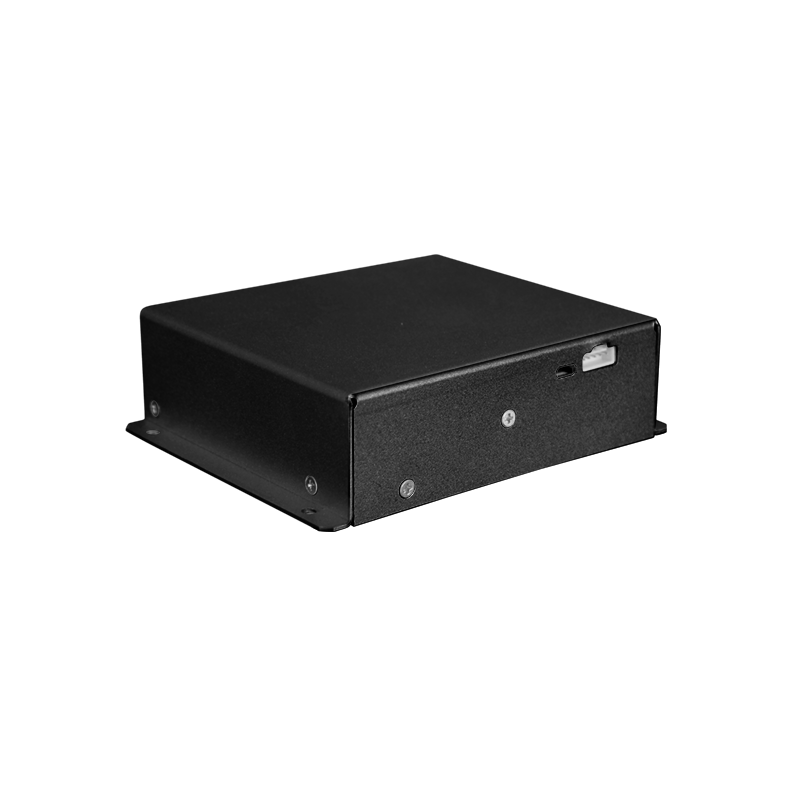Exploration on the Stability of High-Voltage Power Supplies for Semiconductor Testing
Abstract: This paper conducts an in-depth exploration on the stability of high-voltage power supplies for semiconductor testing from a professional perspective. It elaborates on its significance in the field of semiconductor testing, analyzes the key factors influencing stability, and details the methods for evaluating stability as well as the relevant technologies and strategies for enhancing stability. The aim is to provide comprehensive and in-depth knowledge references for professionals in the field of semiconductor testing technology and promote the further development and optimization of high-voltage power supply technology in this field.
I. Introduction
With the rapid development of semiconductor technology nowadays, the performance and reliability testing of semiconductor devices is of crucial importance. As a key component in the semiconductor testing system, the stability of the high-voltage power supply directly affects the accuracy and reliability of the testing results. A stable high-voltage power supply can provide precise and constant high-voltage excitation for semiconductor devices, thereby effectively detecting various performance indicators of the devices and ensuring the stable operation of semiconductor products in different application scenarios. Therefore, an in-depth study on the stability of high-voltage power supplies for semiconductor testing is of great practical significance.
II. Factors Affecting the Stability of High-Voltage Power Supplies for Semiconductor Testing
(A) Internal Circuit Design of the Power Supply
The topology structure, component selection, and wiring layout of the internal circuit of the high-voltage power supply all have a significant impact on its stability. For example, adopting an advanced switching power supply topology structure, such as the full-bridge LLC resonant converter, can not only achieve high-voltage output but also effectively reduce switching losses and electromagnetic interference, improving the efficiency and stability of the power supply. In terms of components, the selection of high-precision and low-temperature-coefficient resistors, capacitors, and inductors helps to reduce voltage fluctuations caused by the drift of component parameters. In addition, a reasonable wiring layout can reduce the parasitic inductance and capacitance of the lines, minimizing signal interference and ensuring the stability of the power supply output.
(B) Load Characteristics
During the semiconductor testing process, the load usually exhibits complex and changeable characteristics. Different types and specifications of semiconductor devices have different impedance characteristics during testing, and the load impedance will also change with the variation of testing conditions. When the load changes suddenly, for example, from a high impedance to a low impedance instantaneously, if the dynamic response ability of the high-voltage power supply is insufficient, it will lead to significant fluctuations in the output voltage, thus affecting the accuracy of the testing. Therefore, the high-voltage power supply needs to have good load adaptability and a fast dynamic response ability to cope with the challenges brought by load changes.
(C) Environmental Factors
Environmental factors such as ambient temperature, humidity, and electromagnetic interference cannot be ignored in terms of their impact on the stability of the high-voltage power supply. Changes in temperature will cause changes in the parameters of electronic components. For example, the on-resistance of semiconductor devices and the capacitance value of capacitors will change with temperature, thereby affecting the output voltage of the power supply. A high-humidity environment may lead to a decline in the insulation performance of the lines, causing leakage or short-circuit faults and endangering the stable operation of the power supply. In addition, electromagnetic interference in the surrounding environment, such as electromagnetic radiation from other testing equipment or industrial equipment, may couple into the circuit of the high-voltage power supply, interfering with its normal operation and causing instability in the output voltage.
III. Evaluation Methods for the Stability of High-Voltage Power Supplies for Semiconductor Testing
(A) Voltage Ripple Measurement
Voltage ripple is one of the important indicators for measuring the output stability of a high-voltage power supply. By using a high-precision oscilloscope or a dedicated voltage ripple measuring instrument, the voltage waveform at the output end of the high-voltage power supply is monitored and analyzed. The voltage ripple is usually expressed in terms of peak-to-peak value or root-mean-square value. A smaller voltage ripple means a more stable output voltage of the power supply. In semiconductor testing, for some testing items with extremely high requirements for voltage accuracy, such as the testing of high-precision analog devices, the requirements for voltage ripple are usually more stringent, generally requiring the ripple value to be controlled within a very small range to ensure the accuracy of the testing results.
(B) Load Regulation Testing
Load regulation reflects the ability of a high-voltage power supply to maintain a stable output voltage when the load changes. During the test, with the power supply outputting the rated voltage, the load impedance is gradually changed, the output voltage changes under different load conditions are measured, and the load regulation is calculated. The formula for calculating load regulation is: Load regulation = (No-load output voltage Full-load output voltage) / Full-load output voltage × 100%. Generally speaking, a high-quality high-voltage power supply for semiconductor testing should have a low load regulation to ensure that it can provide a stable testing voltage for semiconductor devices under different load states.
(C) Temperature Stability Testing
To evaluate the impact of ambient temperature on the stability of the high-voltage power supply, temperature stability testing is required. The high-voltage power supply is placed in an environmental test chamber with precise temperature control. At different temperature points (usually covering its working temperature range), the output voltage of the power supply is measured, and the curve of voltage change with temperature is recorded. Temperature stability is usually expressed in terms of temperature coefficient, that is, the change in output voltage caused by a unit change in temperature. For a high-voltage power supply for semiconductor testing, it is required to have a small temperature coefficient to ensure that it can work stably under different ambient temperatures and avoid testing errors caused by temperature changes.
IV. Technologies and Strategies for Enhancing the Stability of High-Voltage Power Supplies for Semiconductor Testing
(A) Adoption of Closed-Loop Feedback Control Technology
Closed-loop feedback control is a commonly used technical means to improve the stability of high-voltage power supplies. By setting a voltage sampling circuit at the output end of the power supply, the output voltage is monitored in real time, and the sampling signal is fed back to the control circuit. The control circuit adjusts the conduction time or conduction frequency of the power switches inside the power supply according to the deviation between the feedback signal and the set voltage value, thereby realizing precise control of the output voltage. For example, adopting a Proportional-Integral-Derivative (PID) controller can perform comprehensive adjustment based on the proportional, integral, and differential information of the voltage deviation, making the output voltage quickly and accurately stabilize near the set value, effectively improving the stability and dynamic response performance of the power supply.
(B) Optimization of the Heat Dissipation Design of the Power Supply
In view of the impact of temperature on the stability of the high-voltage power supply, optimizing the heat dissipation design is of great importance. Reasonably designing the heat dissipation structure of the power supply, such as adopting efficient heat sinks, cooling fans, or liquid cooling systems, can timely dissipate the heat generated inside the power supply, reducing the working temperature of the components. At the same time, in the circuit design, considering the application of thermal design technologies such as thermal isolation and thermal compensation can reduce the impact of temperature changes on the circuit performance. For example, for key components that are sensitive to temperature, local heating or cooling measures can be adopted to make them work in a relatively stable temperature environment, thereby improving the overall temperature stability of the power supply.
(C) Electromagnetic Shielding and Filtering Measures
To reduce the impact of electromagnetic interference on the stability of the high-voltage power supply, effective electromagnetic shielding and filtering measures should be taken. In the structural design of the power supply, a metal shielding shell is adopted to isolate the internal circuit of the power supply from the external electromagnetic environment, preventing the intrusion of external electromagnetic interference. At the same time, at the input and output ends of the power supply and at key circuit nodes inside, appropriate electromagnetic filters such as common-mode filters and differential-mode filters are set up to filter out the high-frequency electromagnetic noise in the power supply lines and suppress the propagation of electromagnetic interference in the circuit, ensuring the purity and stability of the output voltage of the power supply.
V. Conclusion
The stability of high-voltage power supplies for semiconductor testing plays a decisive role in the performance testing and quality assurance of semiconductor devices. By thoroughly analyzing the factors affecting its stability, adopting scientific and reasonable evaluation methods, and applying effective technologies and strategies to enhance stability, more precise and reliable high-voltage power supply support can be provided for semiconductor testing. With the continuous progress of semiconductor technology, the requirements for the stability of high-voltage power supplies will increase day by day. Continuous research and innovation will promote the development of high-voltage power supply technology for semiconductor testing to a higher level, laying a solid technological foundation for the prosperity of the semiconductor industry. In the future development, it is necessary to further explore new circuit topology structures, control algorithms, and material technologies, etc., to meet the increasingly complex and demanding semiconductor testing requirements and promote the continuous innovation and development of the entire semiconductor industry.




















